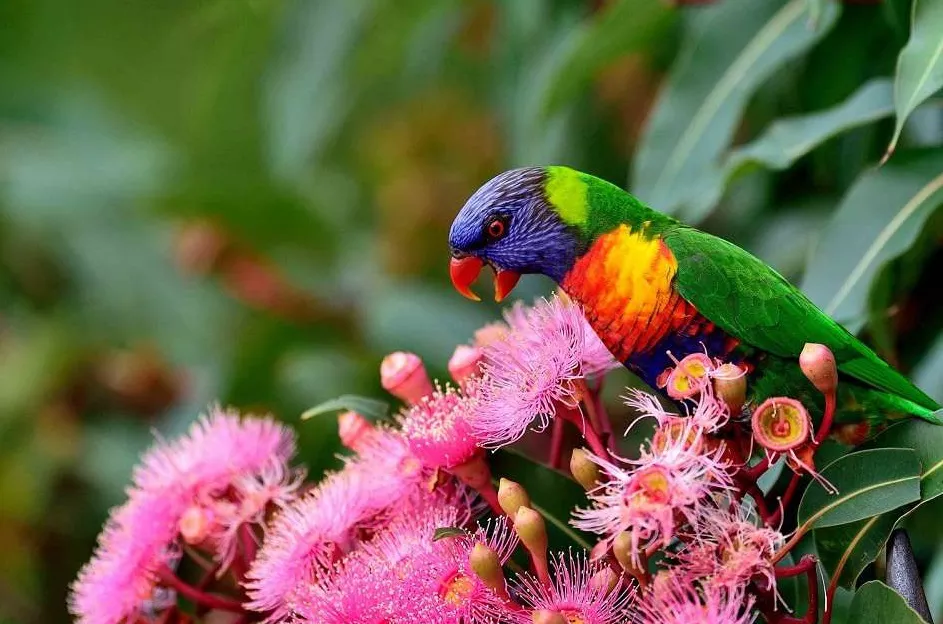The coconut lorikeet (Trichoglossus haematodus) also known as the green-naped lorikeet is a parrot in the family Psittaculidae. Inhabits lowland forests, open woodlands, and parks and feeds on pollen and nectar, as well as seeds, fruit, and insects. Works in pairs or clusters.
What does Coconut lorikeet look like
The coconut lorikeet measures 25–30 cm (10–12 in) in length and weighs around 109–137 g (3.8–4.8 oz). The plumage is brightly colored, depending on the distribution of the subspecies, the bill is orange-red, and the feet are blue-gray. The top of the head, jaw and cheeks are dark blue. There are purple-brown and yellow-green rings on the occipital and upper neck. The back, wings and tail feathers are green. The chest is red with black banded spots, the abdomen and sides are dark green with red horizontal spots, and the undertail coverts are yellow.
Coconut lorikeet habitat
Habitat in coniferous forests, broad-leaved forests, temperate forests, rainforests, savannah forests, forest margins. Lowland forests, parks and gardens.
Coconut lorikeet living habit
The coconut lorikeet does not migrate, but mostly moves in pairs or groups, lively and active, with noisy calls. The flight is straight and fast. The main food is the fruits, seeds, buds, nectar, etc. of plants, especially apples, pears, and immature corn and sorghum that have just been filled with grain, and occasionally some insects. Correspondingly, the gizzard is relatively small and non-muscular. In flowering season, coconut lorikeet flies from one bush to another, from one region to another, spreading pollen like hummingbirds living in South America. Its tongue is covered with brush-like protrusions, perfectly adapted to suck pollen, nectar and soft juicy fruit life. In order to find food, they often travel long distances, and sometimes visit fruit trees or gardens near people’s homes to take nectar.
Distribution area of Coconut lorikeet
Distributed in Australia, Indonesia, New Caledonia, Papua New Guinea, Solomon Islands, East Timor, Vanuatu.
Mode of reproduction
The coconut lorikeet builds nests in tall hollow tree trunks in the wild, and begins to estrus and courtship in December every year. Each clutch lays 2-3 eggs. Eggs are pure white, hatched mainly by females. The incubation period is 25 days.
For artificially bred coconut lorikeet, once it starts breeding, it is very prolific and stable and continues to reproduce. Generally speaking, male birds mature when they are about 18-20 months old, and female birds take two years. They are prolific and stable. Breeding species are available throughout the year. Of course, it is possible to start breeding very early, but it is recommended to give breeding opportunities after full sexual maturity. A nest produces about 2 eggs, and the incubation period is 23-26 days, 7-8 weeks When the feathers are grown, it is not advisable to remove the young birds too late. If the parent birds start to prepare for the next brood, the young birds may be attacked by the parent birds if they have not left the nest.


 Facebook
Facebook  Instagram
Instagram  Youtube
Youtube 